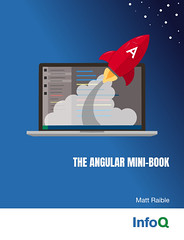Granted, this post about how painful JSF is is almost 6 months old, but I think it's still mostly true.
Want to compare times? More than three man-weeks have been spent fixing silly JSF navigation problems. A full CRUD AJAX interface with Spring MVC and prototype in the same project took four days, and there was no previous experience with Spring MVC.
If you're going to use JSF, I highly recommend Facelets or Shale/Seam. However, those are mentioned as well:
The default view technology is JSP, even when no one in the real world would recommend it; instead, use Facelets, or Clay, or some other non-standard framework. Not trying to be sarcastic here, since Facelets is pretty good, but this complicates the hiring and education of the team and in fact invalidates the selling point of Faces 'being a standard'.
IMO, Facelets is very easy to learn. If you know how to program JSPs with JSF, you should be able to use Facelets in under an hour. When we converted AppFuse's JSF flavor from JSP to Facelets, rarely did the body have to change - we just had to change from taglibs to XML namespaces.
When you are not working with persistent data (if you are living in a cave or developing wizard interfaces) there are two scopes to store model state: the session context, which raises concurrency issues and is not recommended by the Faces community, and the conversation/process/whatever context, which is not standard and imply installing shale or seam to put even more lipstick on the pig.
There's two problems with Shale and Facelets - the activity on these projects is very low. Shale still has its creators around, so even while its seldom used, you can probably still get your questions answered. However, Facelets seems to be suffering from "developer abandonment".
Conclusion: don't use JSF simply because it's a "standard". Use other frameworks that are more actively developed and designed for the web. For component-based frameworks, the most popular are Tapestry and Wicket. Less popular ones are RIFE and Click.
If you still want to use JSF, you should probably use Seam, but don't simply use JSF because it's a standard. If it was a de-facto standard, that'd be another story.
Of course, you could also help improve JSF 2.0. But that's not scheduled for release until late 2008. I'm sure 2 or 3 commentors will claim we'll all be using Rails or Grails by then. 
I'm trying to configure Apache and Tomcat to work with a desired architecture for doing A/B Testing on my current project. Our basic idea is that we'll deploy entirely new WAR files when we have a test, then use the magic of Apache's mod_rewrite, mod_jk and possible the UrlRewriteFilter to keep the URLs somewhat consistent between version A and version B. Here's some questions I have for those folks who might've done this before:
- Is it possible to use Apache's mod_rewrite to map http://www.domain.com/?v=1 to http://www.domain.com/1 (this allows us to have two different applications/wars served up to the same domain).
- If #1 is possible, what's the RewriteRule for allowing the parameter to be anywhere in the query string, but still allowing the target to use it as the context name?
- Is it possible to use something in the WAR (likely the UrlRewriteFilter) to produce HTML that has rewritten links (i.e. http://www.domain.com/?id=1 in the WAR whose context is 1)?
In other words, can Apache forward to the correct app going in, and can that app rewrite its URLs so those same URLs are used when going out?
I believe this is all possible. However, I am having difficulty getting mod_jk to allow mod_rewrite to be processed first. If I have the following in httpd.conf, it seems like htdocs/.htaccess gets bypassed.
JkMount /* loadbalancer
Is it possible to configure Apache/mod_jk so WARs can hang off the root, but still use mod_rewrite? If not, the only solution I can think of is to use UrlRewriteFilter in the WAR to forward to another context when a "v" parameter is in the URL. Currently, the UrlRewriteFilter doesn't allow forwarding to another context. The good news is the Servlet API allows it. I got it working in Tomcat (with crossContext enabled) and wrote a patch for the UrlRewriteFilter.
Anyone out there have experience doing A/B Testing in a Java webapp? If so, did you try to disguise the URLs for the different versions?
Update:
I've got a bit of this working. The magic formula seems to be don't try to hang things off the root - use mod_rewrite to make things appear to hang off the root.
First of all, I posted a message similar to this post to the tomcat-user mailing list. Before I did so, I discovered mod_proxy_ajp, which happens to look like the successor to mod_jk. AFAICT, it doesn't allow fine-grained rules (i.e. only serve up *.jsp and *.do from Tomcat), so I'll stick with mod_jk for now.
Rather than proxying all root-level requests to Tomcat, I changed my JkMount to expect all Tomcat applications to have a common prefix. For example, "app".
JkMount /app* loadbalancer
This allows me to create RewriteRules in htdocs/.htaccess to detect the "v" parameter and forward to Tomcat.
RewriteEngine On
RewriteCond %{QUERY_STRING} ^v=(.*)$
RewriteRule ^(.*)$ /app%1/ [L]
This isn't that robust as adding another parameter causes the forward to fail. However, it does successfully forward http://localhost/?v=1 to /app1 on Tomcat and http://localhost/?v=2 to /app2 on Tomcat.
What about when ?v=3 is passed in? There's no /app3 installed on Tomcat, so Tomcat's ROOT application will be hit. Using the UrlRewriteFilter, I installed a root application (which we'll likely need anyway) with the following rule:
<rule>
<from>^/app(.*)$</from>
<to type="forward">/</to>
</rule>
So I've solved problem #1: Using URL parameters to serve up different web applications. To solve the second issue (webapps should rewrite their URLs to delete their context path), I found two solutions:
- Use mod_proxy_html. Sounds reasonable, but requires the use of mod_proxy.
- Use the UrlRewriteFilter and outbound-rules.
Since I'm using mod_jk, #2 is the reasonable choice. I added the following link in my /app1/index.jsp:
<a href="<c:url value="/products.jsp"/>">link to products</a>
By default, this gets written out as http://localhost/app1/products.jsp. To change it to http://localhost/products.jsp?v=1, I added the following to urlrewrite.xml:
<outbound-rule>
<from>^/app1/(.*)$</from>
<to>/$1?v=1</to>
</outbound-rule>
This produces the desired effect, except that when I click on the link, a new session is created every time. AFAICT, I probably need to do something with cookies so the jsessionid cookie is set for the proper path.
Not bad for a day's work. Only 2 questions remain:
- What's a more robust RewriteRule that doesn't care about other parameters being passed in?
- What do I need to do so new sessions aren't created when using an outbound-rule?
It's entirely possible that mod_proxy_ajp with mod_rewrite_html is best tool for this. Can mod_proxy handle wildcards like JkMount can? I've heard it's faster than mod_jk, so it probably warrants further investigation.
Update 2: I achieved the desired result using mod_rewrite, mod_jk and the UrlRewriteFilter (for outgoing links). Here's what I put in htdocs/.htaccess (on Apache):
RewriteEngine On
# http://domain/?v=1 --> http://domain/app1/?v=1
RewriteCond %{QUERY_STRING} v=([^&]+)
RewriteRule ^(.*)$ /app%1/$1 [L]
# http://domain --> http://domain/app (default ROOT in Tomcat)
RewriteRule ^$ /app/ [L]
And in the urlrewrite.xml of each webapp:
<outbound-rule>
<from>^/app([0-9])/([A-Za-z0-9]+)\.([A-Za-z0-9]+)$</from>
<to>/$2.$3?v=$1</to>
</outbound-rule>
<outbound-rule>
<from>^/app([0-9])/([A-Za-z0-9]+)\.([A-Za-z0-9]+)\?(.*)$</from>
<to>/$2.$3?$4&v=$1</to>
</outbound-rule>
Next I'll try to see if I can get it all working with mod_proxy_ajp and mod_proxy_html. Anyone know the equivalent of "JkMount /app*" when using LocationMatch with mod_proxy?




